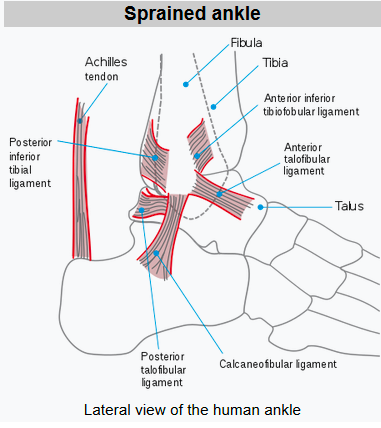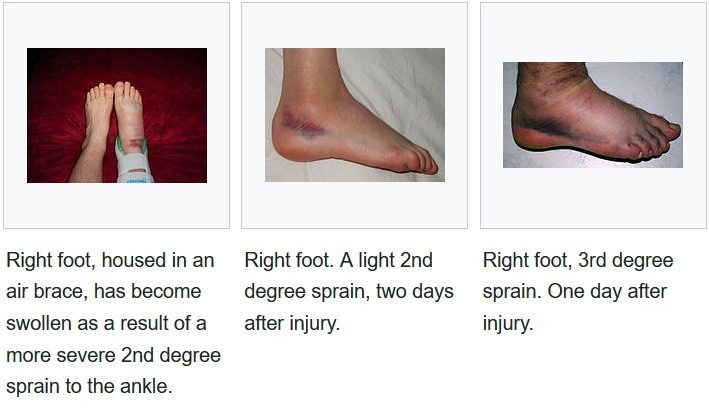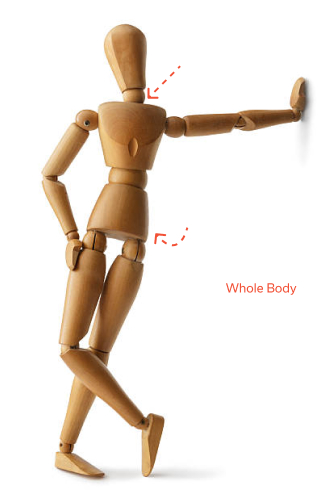Sprained your ankle again?
By Nigel Chua
Does it seem as though you always tend to roll the same ankle and it seems looser than the other?
Ever wondered if perhaps there is a way to change that?
Unfortunately 90% of untreated ankle sprains become recurrent, but skilled management during the initial stages decreases the recurrence rate to less than 35%.
An ankle sprain is a tear in the outer ligaments of the ankle.
With repeated overstretching in ankle sprains, the injured ligaments lose their normal elastic function and length, decreasing the foot’s ability to adjust quickly on uneven surfaces. This increases the “loose-ness” of the ankle, and increases the likelihood of worse sprains later. The seriousness of an ankle sprain ranges from a mild sprain to a completely torn ligament of the ankle.
Inversion ankle sprains are the most common ankle sprain.
They usually happen when the foot lands awkwardly and rolls inwards, stretching the outer ligaments of the ankle, resulting in pain on the outer part of the ankle.
Our ankles are supported by three main ligaments: the anterior and posterior talofibular ligaments (ATFL and PTFL) and the calcaneofibular ligament (CFL). The ATFL is the most commonly sprained ligament because of the limitations of its structural mechanics and support.
The other type of ankle sprain is the reverse of the inversion sprain, which is an eversion sprain on the inside part of the ankle, which happens when the foot is overstretched outwards.
I THINK I SPRAINED MY ANKLE. WHAT SHOULD I DO?
If you cannot walk or put weight on it, you may have a fracture – it is best for you to get an x-ray done. But, if putting some weight on it hurts only a little, you should apply the RICE (rest, ice, compress and elevate) method.
Go home as soon as possible, and limit walking on the sprained ankle. Place crushed ice into a plastic bag and wrap it with a thin, wet towel and apply to the painful ankle for about 15 minutes. *Caution: do not apply ice directly to your skin for more than five minutes because it can cause ice-burn.* Do this every few hours for the initial 48 hours to minimize swelling and pain, which decreases secondary damage in the ankle.
For the ligaments to heal well, the ankle should be protected and immobilized. For minor sprains, you can use a brace which is secure enough to prevent swelling, but not too tight to constrict circulation (your toes should not turn blue).
Wear it during waking hours, and remove it when you’re going to sleep. Elevate your injured leg by placing pillows beneath the ankle (about 5 – 8 cm height is more than adequate).
Do ankle pumping exercises by bringing your feet up and down during elevation - this helps with circulation. Repeat this until the swelling has significantly reduced.
I DON’T WANT IT TO RECUR – TEACH ME HOW.
Repeated ankle sprains are likely to cause ligaments to permanently loosen due to frequent overstretching. When this happens, they are not able to do what they’re supposed to do, which is to hold our bones together and prevent excessive unnecessary movements.
Fundamental clinical rehabilitation programs help to re-train your weakened ligaments to regain their strength, and re-educate them to send the right balance signals again. This approach helps to restore balance in your ankles and prevent recurrences of ankle sprains.
PHYSIOTHERAPY PROGRAM FOR A SPRAINED ANKLE
The physiotherapy rehabilitation treatment program may include:
- Ultrasonic therapy to accelerate healing and decrease pain.
- Gentle soft tissue massage to decrease swelling and help circulation.
- A customized exercise program which may include:
a. Calf ABC exercises to move the ankle multi-directionally
b. Isometric strengthening exercises such as pushing against a surface
c. Balance training.

Browse other articles by category
 PHYSIOTHERAPY
PHYSIOTHERAPY
 Hand Therapy
Hand Therapy
 Alternative
Alternative
 Massage
Massage
 Traditional Chinese Medicine Treatment
Traditional Chinese Medicine Treatment
 Rehab
Physiotherapy For Upper Back Pain
Physiotherapy For Shoulder Pain
Physiotherapy for Knee Pain
Physiotherapy For Slipped Disc
Orthopedic Doctors, Insurance & Healthcare
Rehab
Physiotherapy For Upper Back Pain
Physiotherapy For Shoulder Pain
Physiotherapy for Knee Pain
Physiotherapy For Slipped Disc
Orthopedic Doctors, Insurance & Healthcare
 Physiotherapy For Lower Back Pain
Physiotherapy for Neck Pain
Frozen Shoulder
Physiotherapy for Back Pain
Physiotherapy For Lower Back Pain
Physiotherapy for Neck Pain
Frozen Shoulder
Physiotherapy for Back Pain

 Whatsapp us now
Whatsapp us now